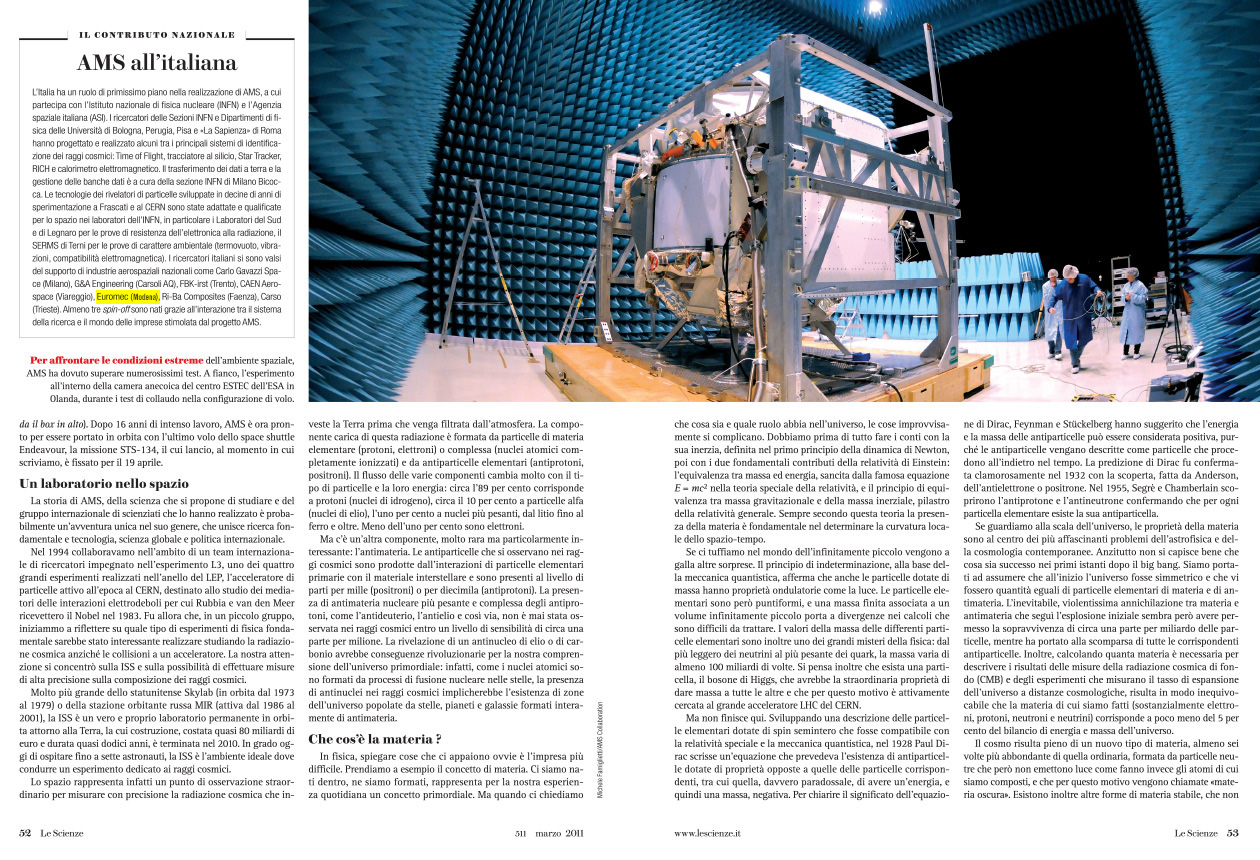As beautifully told in the journal Le Scienze of March 2011, the project that saw EUROMEC among the protagonists in the implementation phase, involves 600 researchers and 60 institutes in 16 countries.
The Alpha Magnetic Spectrometer (AMS) program is based on an agreement between NASA and the Department of Energy (DOE), and is led by Nobel laureate Samuel C.C.Ting, of MIT and CERN.
Italy plays a leading role in the creation of AMS, in which it participates with the National Institute of Nuclear Physics (INFN) and the Italian Space Agency (ASI). Researchers from the INFN Sections and Physics Departments of the Universities of Bologna, Perugia, Pisa and "La Sapienza" of Rome have designed and built some of the main cosmic ray identification systems: Time of Flight, silicon tracker, Star Tracker, RICH and electromagnetic calorimeter. The transfer of data to the ground and the management of the databases is carried out by the INFN section of Milano Bicocca. The particle detector technologies developed over tens of years of experimentation in Frascati and CERN have been adapted and qualified for space in the INFN laboratories, in particular the Laboratories of the South and Legnaro for the resistance tests of electronics to radiation, the SERMS of Terni for environmental tests (thermo vacuum, vibrations, electromagnetic compatibility). The Italian researchers have availed themselves of the support of national aerospace industries including EUROMEC.





